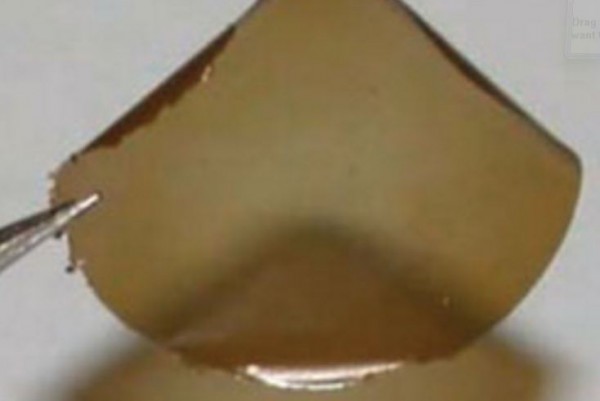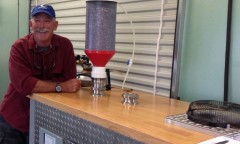By Arthur Dominic J. Villasanta , | April 03, 2017

Graphene oxide membrane.
Scientists at The University of Manchester in the United Kingdom have developed a process that uses graphene-oxide membranes to turn salty seawater into potable drinking water.
Previously, graphene-oxide membranes did dhow exciting potential for gas separation and water filtration. Graphene-oxide membranes developed at the National Graphene Institute at The University of Manchester have already demonstrated the potential of filtering out small nanoparticles, organic molecules, and even large salts.
Like Us on Facebook
Until now, however, they couldn't be used for filtering out common salts used in desalination technologies, which require even smaller filters.
Previous research at The University of Manchester found that if immersed in water, graphene-oxide membranes become slightly swollen. Smaller salts flow through the membrane along with water, but larger ions or molecules are blocked.
Researchers further developed these graphene membranes and found a strategy to avoid the swelling of the membrane when exposed to water. The found a way to precisely control the pore size in the membrane so the membrane can filter common salts out of salty water and make it safe to drink.
"Realization of scalable membranes with uniform pore size down to atomic scale is a significant step forward and will open new possibilities for improving the efficiency of desalination technology," said Prof. Rahul Nair at The University of Manchester.
"This is the first clear-cut experiment in this regime. We also demonstrate that there are realistic possibilities to scale up the described approach and mass produce graphene-based membranes with required sieve sizes."
The developed membranes are not only useful for desalination, but the atomic scale tunability of the pore size also opens new opportunity to fabricate membranes with on-demand filtration capable of filtering out ions according to their sizes.
It's hoped that graphene-oxide membrane systems can be built on smaller scales, making this technology accessible to countries that don't have the money to fund large desalination plants without compromising the yield of fresh water produced.
By 2025, the UN expects that 14% of the world's population will encounter water scarcity. This technology has the potential to revolutionize water filtration across the world, in particular in countries that can't afford large scale desalination plants.
Jijo Abraham and Dr. Vasu Siddeswara Kalangi were the joint-lead authors on the research paper.
-
Use of Coronavirus Pandemic Drones Raises Privacy Concerns: Drones Spread Fear, Local Officials Say

-
Coronavirus Hampers The Delivery Of Lockheed Martin F-35 Stealth Fighters For 2020

-
Instagram Speeds Up Plans to Add Account Memorialization Feature Due to COVID-19 Deaths

-
NASA: Perseverance Plans to Bring 'Mars Rock' to Earth in 2031

-
600 Dead And 3,000 In The Hospital as Iranians Believed Drinking High-Concentrations of Alcohol Can Cure The Coronavirus

-
600 Dead And 3,000 In The Hospital as Iranians Believed Drinking High-Concentrations of Alcohol Can Cure The Coronavirus

-
COVID-19: Doctors, Nurses Use Virtual Reality to Learn New Skills in Treating Coronavirus Patients











